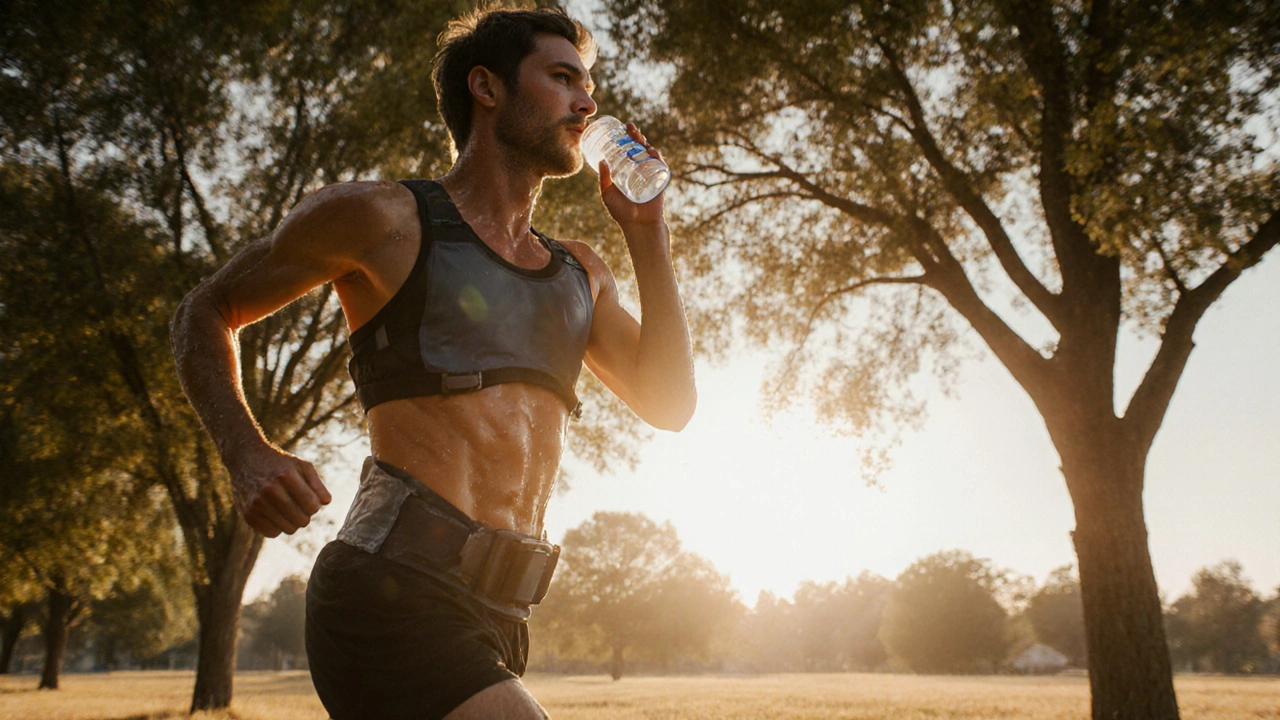When you drink water while running, the simple act of taking in fluids during exercise to maintain bodily function and performance. Also known as running hydration, it’s not just about avoiding thirst—it’s about keeping your heart, muscles, and brain working at their best. Skip it, and you’re not just feeling sluggish—you’re risking cramps, dizziness, and even heat exhaustion. You don’t need to chug gallons, but ignoring your body’s signals? That’s a recipe for a bad run.
Many runners think they only need water on hot days or during long runs. That’s a myth. Even a 30-minute jog in cool weather can drain your fluids, especially if you’re sweating. Your body loses water through sweat, breath, and even skin—every step adds up. And when you’re low on fluids, your blood thickens. That means your heart works harder to pump oxygen to your muscles. You slow down faster. You feel tired sooner. You might even get a headache or nausea. Dehydration during run, a condition where fluid loss exceeds intake, leading to impaired physical and cognitive function doesn’t wait for you to feel thirsty. By the time you’re thirsty, you’re already 2% dehydrated—and that’s enough to tank your performance.
So how much should you actually drink? There’s no one-size-fits-all number. It depends on your sweat rate, the weather, how hard you’re pushing, and how long you’re out there. For most people running under an hour, sipping 4 to 8 ounces every 15 to 20 minutes is enough. For longer runs? You’ll need more—and maybe a little salt too. Electrolytes matter, especially if you’re sweating a lot. But don’t overdo it with fancy sports drinks. Water is still the base. If you’re not running over 60 minutes or in extreme heat, you don’t need sugar-laden bottles. Carry a handheld bottle, wear a hydration belt, or plan your route near water fountains. Practice drinking while moving. Get used to it. Train your gut like you train your legs.
And what about overhydration? Yes, it’s a real thing. Drinking too much water without replacing electrolytes can lead to hyponatremia—a dangerous drop in sodium levels. It’s rare, but it happens, especially in slower runners who overdrink at aid stations. The fix? Listen to your body. Drink when you’re thirsty, not because you think you should. If your urine is pale yellow, you’re good. If it’s clear, you might be drinking too much. If it’s dark, you need more.
What you’ll find in these posts isn’t theory. It’s what runners actually do. From quick tips for morning jogs to how to hydrate during a 10K, these articles cut through the noise. You’ll see real advice from people who’ve been there—no fluff, no gimmicks, just what works. Whether you’re new to running or you’ve been at it for years, the right hydration strategy makes every run easier, safer, and more enjoyable.

Drinking water while running isn't optional-it's critical for performance and safety. Learn how much, when, and what to drink based on distance, heat, and sweat rate.
READ